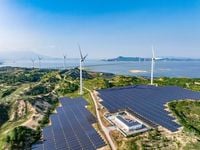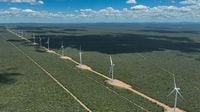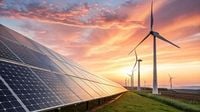On October 7, 2025, a wave of optimism swept through the global energy sector as a series of major reports confirmed that renewable energy is not only holding its ground but is actually outpacing fossil fuels for the first time in history. According to the International Energy Agency (IEA) and the independent think tank Ember, solar and wind power have finally overtaken coal in global electricity generation—a milestone that signals a new era in the world’s energy transition.
This remarkable achievement comes despite significant headwinds. The United States and China, two of the world’s largest economies and biggest carbon emitters, have both scaled back their renewables growth outlooks due to regulatory shifts and policy changes. The IEA’s latest medium-term forecast, as reported by ABC News, reveals that the U.S. early phase-out of federal tax incentives and other regulatory changes have slashed growth expectations for renewables by almost 50% compared to last year. China, meanwhile, has shifted from fixed tariffs to auction-based systems, impacting project economics and slightly reducing its own forecast for renewables growth.
Yet, even with these setbacks, the global picture remains overwhelmingly positive. The IEA projects that worldwide renewable power capacity will more than double by 2030, with an increase of 4,600 gigawatts—an amount roughly equivalent to adding the entire power generation capacity of China, the European Union, and Japan combined. Solar photovoltaic (PV) technology is poised to lead the charge, accounting for about 80% of this growth, followed by wind, hydro, bioenergy, and geothermal sources.
Ember’s latest report, based on monthly electricity data from 88 countries that together represent 93% of global electricity demand, confirms that in the first half of 2025, renewables grew by 7.7% while coal generation declined. For the first time on record, renewable sources generated more power than coal. Solar generation alone grew by a staggering 31%, and wind by 7.7%, contributing to a combined increase of over 400 terawatt hours—more than the total increase in global electricity demand for the same period.
"Solar and wind are now growing fast enough to meet the world’s growing appetite for electricity. This marks the beginning of a shift where clean power is keeping pace with demand growth," said Małgorzata Wiatros-Motyka, Ember’s Senior Electricity Analyst, in a press release quoted by UN News. The report describes this as a crucial turning point, with clean power finally able to keep up with—and even outpace—rising global demand.
There’s no denying that electricity demand is rising worldwide, fueled by economic growth, the proliferation of electric vehicles and data centers, swelling populations in developing nations, and the need for more cooling as global temperatures climb. Historically, meeting this demand meant burning more fossil fuels, with all the environmental consequences that entails. But as Ember’s analysis shows, renewables have reached a point where they can shoulder almost all of this new demand, even as fossil fuel generation drops slightly—by less than 1%, but a significant drop nonetheless, according to euronews.
Regional differences remain stark. In China, the world’s largest emitter, the first six months of 2025 saw the country add more solar and wind capacity than the rest of the world combined, leading to a 2% fall in fossil fuel generation and a corresponding drop in emissions. India, too, experienced record growth in solar and wind, outpacing its own demand growth and reducing fossil fuel use. Both countries are now seeing emissions fall—a feat long considered nearly impossible by many analysts.
Europe and the United States, however, present a more mixed picture. In the U.S., demand growth outstripped gains in clean power generation, while in the EU, sluggish wind and hydropower output forced increased reliance on coal and gas, causing fossil fuel generation and emissions to rise in both regions. The U.S. faces particular challenges as the Trump administration has rolled back Biden-era clean energy funding, repealed climate regulations, halted wind projects, and provided regulatory relief for coal-fired plants. Still, as Amanda Smith, a senior scientist at Project Drawdown, told euronews, "I am very cautiously optimistic that renewables can continue to grow and continue to displace fossil fuels in the US. I am more optimistic on the world scale."
Despite these regional bumps in the road, the overall trend is clear. The IEA projects that renewables, including solar, wind, and hydropower, will supply over 90% of the world’s electricity demand growth through 2030. The agency also highlights that renewables’ role is expanding beyond electricity generation. In the transportation sector, renewable energy consumption is expected to rise by 50% by 2030, driven largely by electric vehicles, liquid biofuels, biogases, and renewable hydrogen-based fuels. China and Europe are set to account for 45% of this anticipated increase over the next five years, with India also on track to become the world’s second-largest renewables growth market after China.
Environmental benefits are already being felt. In 2024, carbon dioxide emissions in advanced economies dropped to their lowest level in half a century, thanks to the deployment of solar, wind, nuclear, electric cars, and heat pumps. The IEA estimates that since 2019, these technologies have prevented an estimated 2.6 billion tons of CO2 emissions from entering the atmosphere each year.
Of course, the transition isn’t without its challenges. The IEA’s Renewables 2025 report points to supply chain strains, grid integration issues, and financial pressures as ongoing obstacles. Solar PV and rare earth elements for wind turbines remain heavily concentrated in China, posing risks to supply chain security. Grid integration is another hurdle, with the rapid rise of variable renewables putting pressure on electricity systems and prompting the need for urgent investment in grids, storage, and flexible generation. Pumped-storage hydropower, for instance, is expected to grow almost 80% faster over the next five years compared to the previous five, as countries look for ways to balance variable supply and demand.
UN Secretary-General António Guterres, responding to the latest findings, declared, "The clean energy future is no longer a distant promise – it’s here." He called on countries to "seize this historic opportunity and supercharge the global shift towards a better future for all." Still, Guterres cautioned that the energy transition must be faster and fairer if the world is to meet the Paris Agreement goal of limiting global temperature rise to 1.5 degrees Celsius above pre-industrial levels.
As governments and industry leaders digest these new reports, one thing is clear: the so-called "renewables revolution" is not just a slogan—it’s a reality, unfolding in real time. The world may not be out of the woods yet, but the path forward is brighter than ever.


